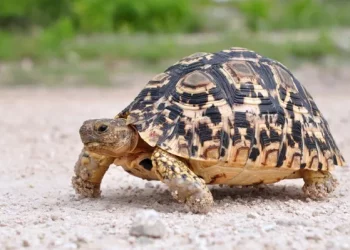Spur-thighed tortoises, scientifically known as Testudo graeca, are beloved for their gentle demeanor and distinctive appearance. These tortoises are native to various regions, including parts of North Africa, Europe, and Asia, and are popular as pets due to their manageable size and docile nature. Proper nutrition is crucial for the health and well-being of spur-thighed tortoises, as it directly impacts their growth, shell development, and overall longevity. This article explores in detail the dietary requirements, feeding habits, and nutritional considerations for spur-thighed tortoises.
What Are Spur-Thighed Tortoises?
Spur-thighed tortoises belong to the family Testudinidae and are characterized by their domed carapace, sturdy limbs, and distinctively marked scutes. They are herbivorous reptiles with a diet that primarily consists of plant matter, including various types of grasses, leafy greens, and occasional fruits or flowers. In their natural habitat, spur-thighed tortoises forage for food in arid or semi-arid environments, adapting to consume a variety of vegetation based on availability and seasonal changes.
Dietary Requirements of Spur-Thighed Tortoises
1. Primary Diet Components
The diet of spur-thighed tortoises should consist predominantly of:
Grasses: Various species of grasses such as Bermuda grass, Timothy grass, and orchard grass are staples in the diet of spur-thighed tortoises. These grasses provide fiber, essential nutrients, and contribute to dental health by aiding in wearing down the tortoise’s beak-like mouth.
Leafy Greens: Dark, leafy greens like dandelion greens, kale, collard greens, and mustard greens are rich sources of vitamins and minerals crucial for tortoise health. These greens provide essential nutrients such as calcium, which is vital for shell and bone health.
See Also: What is the Best Type of Tortoise for a Beginner?
Weeds and Wild Plants: Spur-thighed tortoises also benefit from a variety of weeds and wild plants like clover, plantain, and chickweed. These plants offer dietary diversity and additional nutrients that contribute to overall well-being.
2. Occasional Treats
While the majority of their diet should consist of grasses and leafy greens, spur-thighed tortoises can enjoy occasional treats such as:
Fruits: Small amounts of fruits like berries, melons, and apples can be offered as occasional treats due to their natural sugar content. It’s important to limit fruit intake to prevent obesity and digestive issues.
Flowers: Edible flowers such as hibiscus, roses, and daisies can provide variety and enrichment to the tortoise’s diet. Ensure flowers are free from pesticides or other harmful chemicals before offering them to your tortoise.
Feeding Habits and Considerations
1. Grazing Behavior
Spur-thighed tortoises are natural grazers, spending much of their day foraging for food. Mimicking this natural behavior in captivity is essential for their physical and mental well-being. Providing access to a variety of fresh, pesticide-free vegetation encourages natural feeding behaviors and ensures a balanced diet.
2. Calcium and Vitamin Supplementation
Calcium is crucial for the development and maintenance of a spur-thighed tortoise’s shell and bones. Inadequate calcium intake can lead to metabolic bone disease (MBD), a serious health condition in reptiles. Dusting food items with a calcium supplement formulated for reptiles or providing a calcium block ensures tortoises receive sufficient calcium in their diet.
3. Water Requirements
While spur-thighed tortoises obtain most of their hydration from the foods they eat, providing access to fresh, clean water is still important. Shallow water dishes or bowls should be available for drinking and soaking, although tortoises may not drink water as frequently as other animals.
Common Dietary Issues and Solutions
1. Obesity
Overfeeding high-calorie foods, including fruits and fatty greens, can lead to obesity in spur-thighed tortoises. To prevent obesity, offer these foods sparingly and prioritize a diet rich in fiber and low in fat.
2. Nutrient Deficiencies
A lack of variety in the diet or improper supplementation can lead to nutrient deficiencies in spur-thighed tortoises. Monitoring their diet closely and providing a balanced mix of vegetables, greens, and occasional treats helps prevent nutritional imbalances.
3. Dietary Adjustments Based on Age and Health
The dietary needs of spur-thighed tortoises can vary based on factors such as age, reproductive status, and overall health. Young tortoises may require more protein for growth, while older tortoises may benefit from a diet lower in protein and higher in fiber to support digestive health.
Conclusion
Proper nutrition is fundamental to the health and longevity of spur-thighed tortoises. By understanding their dietary requirements, feeding habits, and nutritional considerations, tortoise owners can provide a balanced and enriching diet that supports optimal health and well-being. From grasses and leafy greens to occasional treats and dietary supplements, each component of the tortoise’s diet plays a vital role in maintaining their physiological functions and ensuring they thrive in captivity. By prioritizing quality nutrition and mimicking natural feeding behaviors, tortoise enthusiasts can enjoy the companionship of these remarkable reptiles for many years to come.
Related Topics:


























